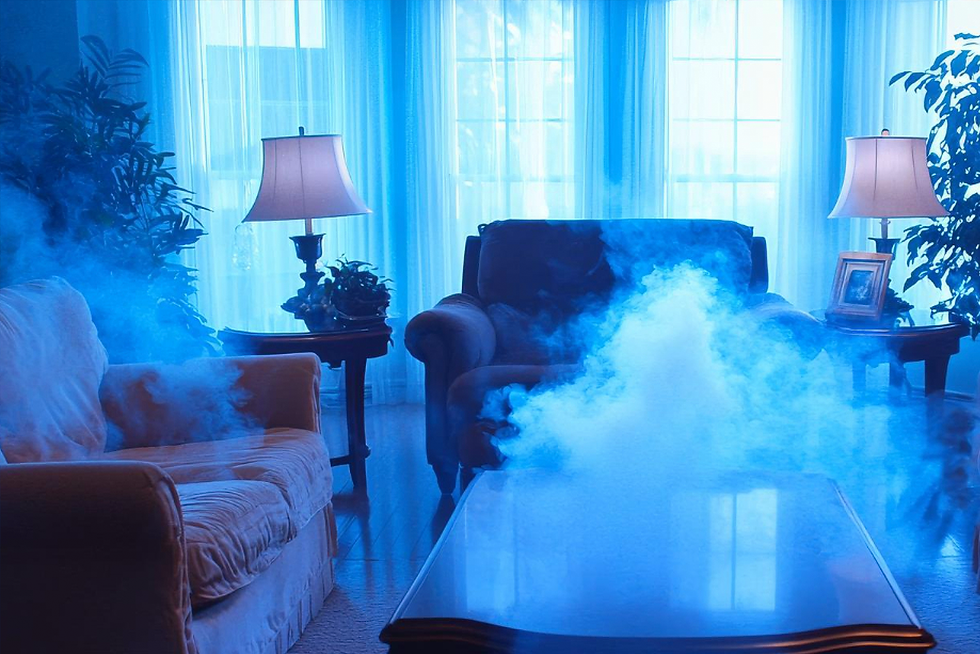Indoor Air Quality and Asthma
- Corey Provencal

- Jul 7, 2012
- 3 min read
Jason Earle. Founder and CEO of Mycelium Holdings LLC Posted: 07/02/2012
With 50 Percent of Childhood Asthma Uncontrolled, Time to Look Homeward
“Despite available treatments, less than 50 percent of asthmatic children control their symptoms,” announced Prof. Nikos Papadopoulos, Chair of the International Consensus (ICON) on Pediatric Asthma, two weeks ago at The European Academy of Allergy and Clinical Immunology (EAACI) 31st Annual meeting, Geneva, Switzerland.
As a childhood asthmatic, and someone who has long worked with families to regain control of their indoor air, that number nearly knocked me off my chair.
Granted, many of the worst cases of asthma exist in developing nations where there is, sadly, little anyone can do about it. This is largely due to substandard living conditions and poor education, compounded by inadequate medical care. When people cook over unventilated open flames indoors, asthma is bound to rear its ugly head. Combine that with a whole host of other variables and you have yourself an epidemic.
But more disconcerting are the cases here in our own backyard, where we have the ability to do something about it, yet we’re still not doing all that can be done.
It’s well known there are higher concentrations of asthmatics in urban environments, especially in close proximity to highways, but asthma is an equal opportunity ailment. It affects people across the whole human spectrum, with kids being the hardest hit.
While medications are an important part of controlling symptoms — they save lives every single day — one of the most overlooked aspects of asthma prevention is the home environment, where many children spend most of their time. In essence, asthma = inflammation + irritation. Most of the irritants that trigger asthma symptoms are avoidable, and really have no place in a healthy home.
-Dampness of any sort, which invariably leads to:
•Mold growth •Dust mites •Pests
– Noxious chemical cleaners
– Air fresheners
– Candles
– VOCs
– Cigarette smoke (does this even need to be said?)
– Carpet in the basement (yes, I know, it’s common, but so are most mistakes)
– And much, much more.
I’ve written about this in the past. Here’s a a piece I did about spring cleaning that elaborates on these items in greater detail, if you’re so inclined to dig deeper.
There was a time when doctors made house calls. These have been supplanted by eight-minute clinic visits. Symptoms are discussed, but underlying causes are rarely explored. Physicians simply have no practical way to know what’s going on in the home, nor do they have the time to pursue it. While numerous studies have been done proving the positive impact of custom, home-based environmental interventions directed at educating the affected and reducing asthma triggers indoors, it has not been done consistently on a large scale.
Interestingly, the CDC Community Preventive Services Task Force put out a report late last year in which they recommend these home-based initiatives. The report cited extensive data showing that a relatively small investment in these programs can yield significant health care savings, reduce the number of missed school days, increase the productivity of the parents who would otherwise miss work to care for their children and, of course, improve quality of life for the whole family.
The average person spends more than 90 percent of every day indoors, yet we hear relatively little in the media about what we’re doing to our indoor environment. Buildings are built tighter to save energy, while a dizzying array of pollutants accumulate indoors, all helping to steadily increase the reach and cost of a disease that should already be on the decline. It’s part of our modern condition.
There is much that can be done at relatively low cost. Most synthetic cleaning products, for example, can be swapped for natural versions (many of which work better!); air fresheners can be jettisoned in favor of HEPA air purifiers and HEPA vacuum cleaners, and pillows, mattresses and bedding can be fitted with allergen encasements. Some homes require professional help, especially those with serious moisture, mold or pest problems, but a great percentage will benefit from minor to moderate interventions.
The home environment is what I call the last mile in asthma treatment and prevention. It is where education and awareness can help turn the asthma juggernaut around, and where more attention needs to be directed. The solutions to much of this suffering are hiding in plain sight.
John P. Lapotaire, CIEC Certified Indoor Environmental Consultant Microshield Environmental Services, LLC www.Microshield-ES.com
#microshield #IESO #FloridaDBPR #Chapter468 #HB5007 #indoorairquality #SenateBill2234 #mold #IICRC #IEQ32 #LEED #DepartmentofBusinessandProfessionalRegulation #moldpretreatment #MoldRelatedServicesLicensingProgram #SB1244 #PCBBCAS1101 #HB4171 #moldtesting #moldprevention #IndoorEnvironmentalStandardOrganization #healthyhome #ResidentialMoldAssessment #HB5005 #FloridaStatutes #moldinspection #moldremoval #moldremediation #ASTM #johnlapotaire #USGB #newhomemold #PartXVI #JohnPLapotaire #HouseBill713 #ciec #airquality









Comments